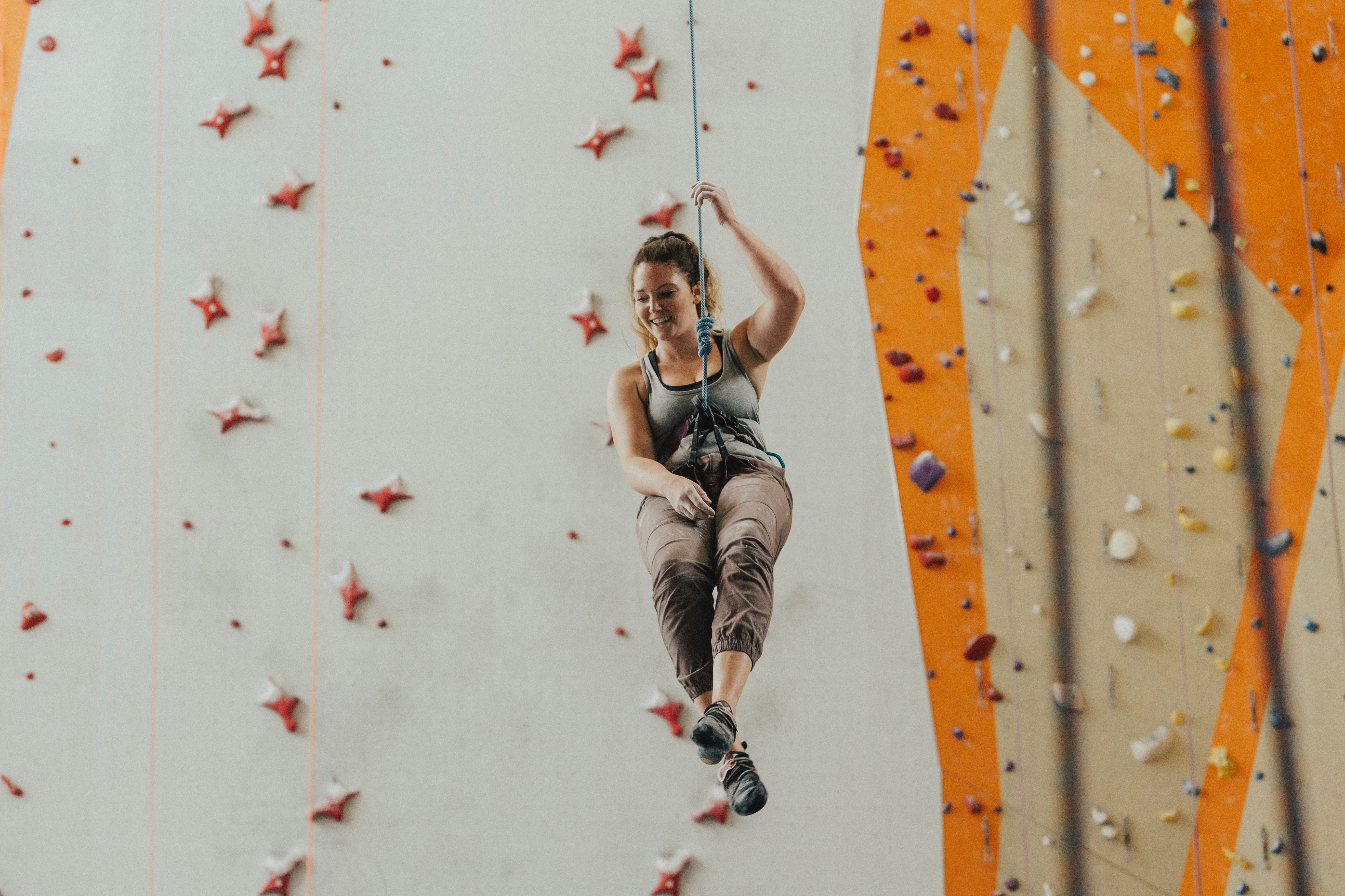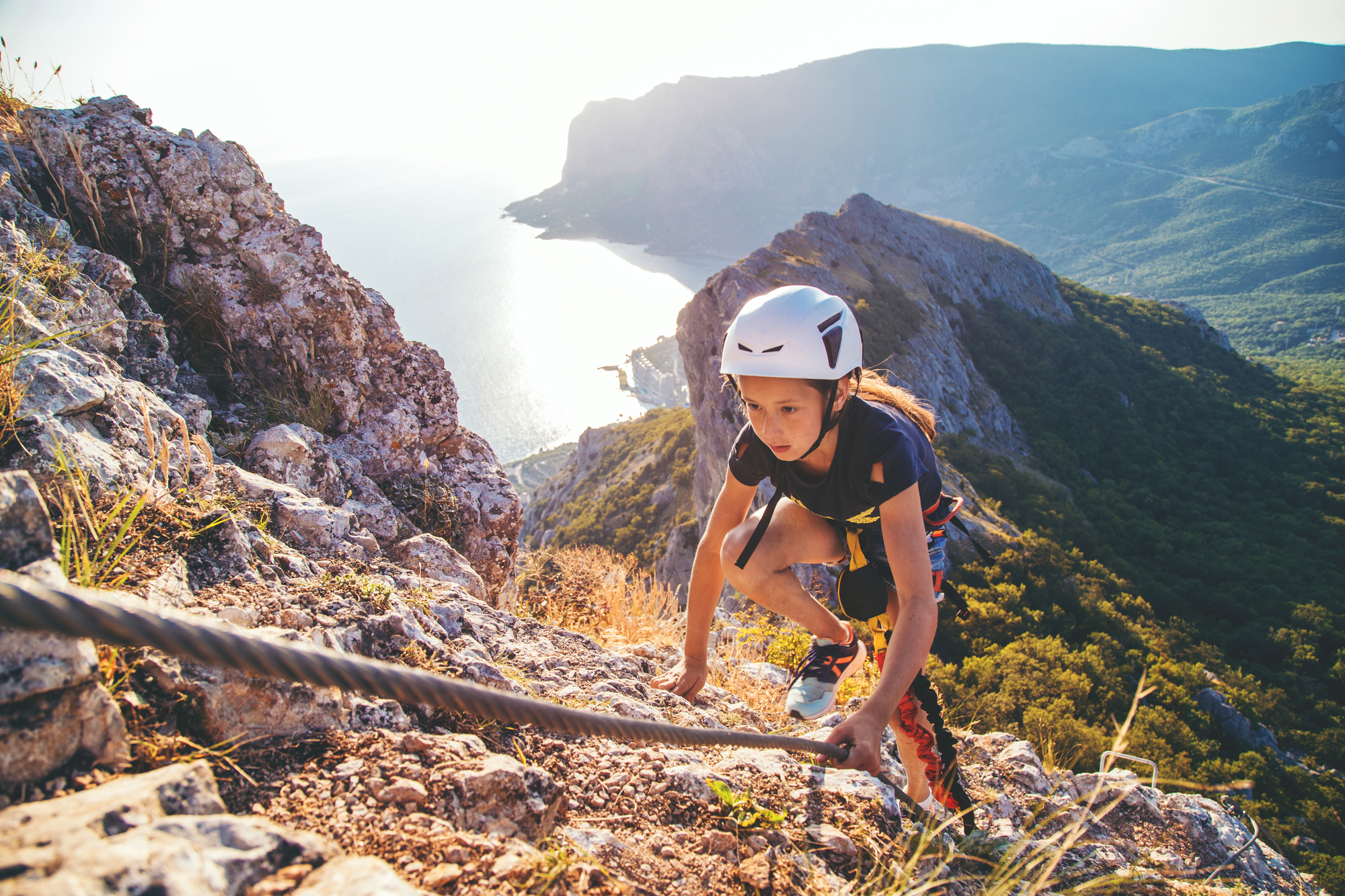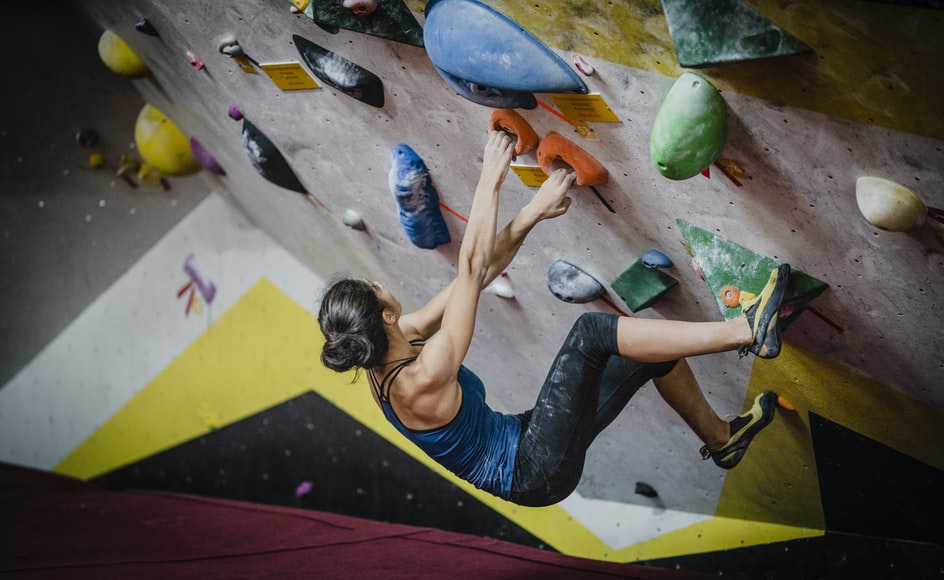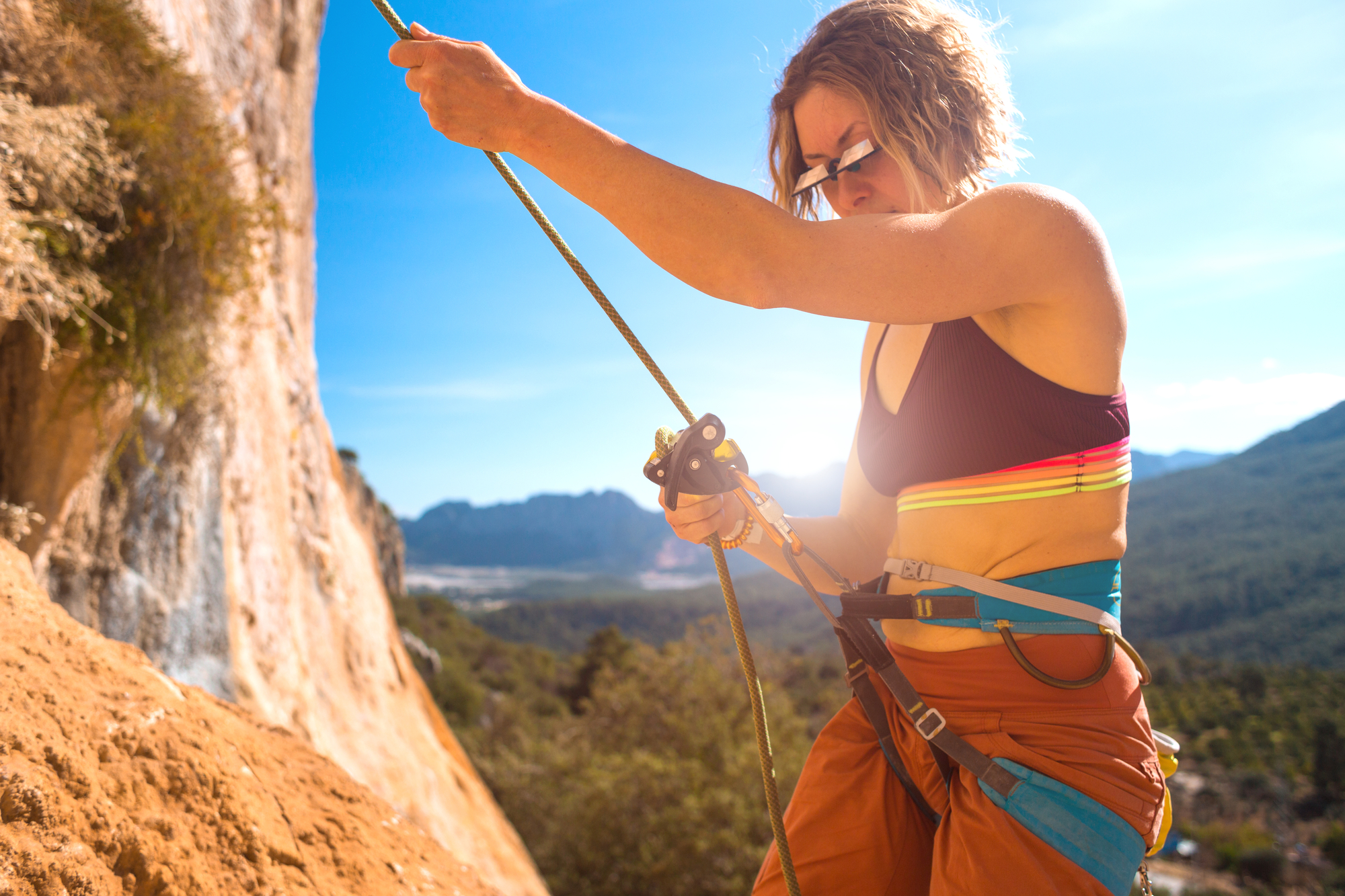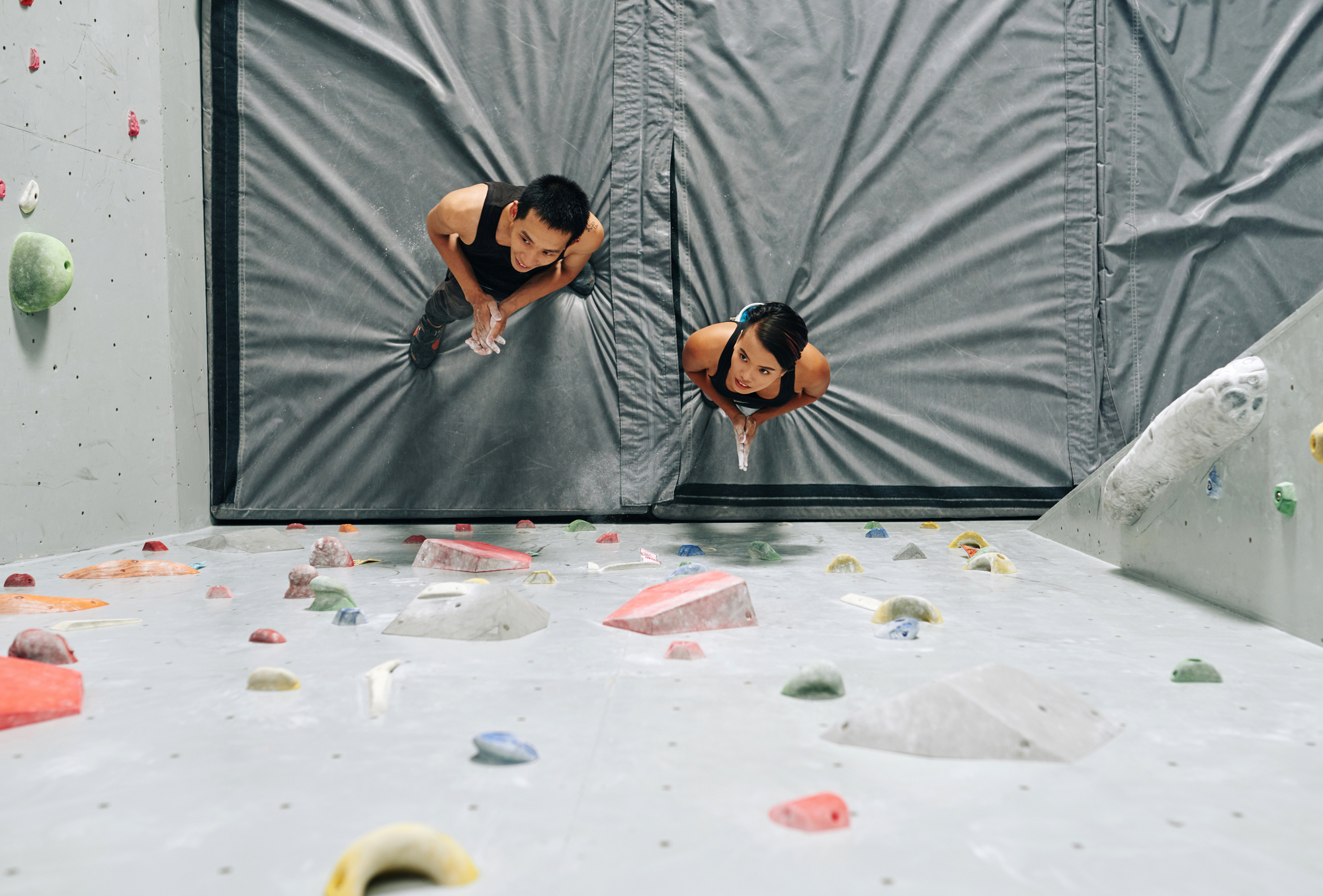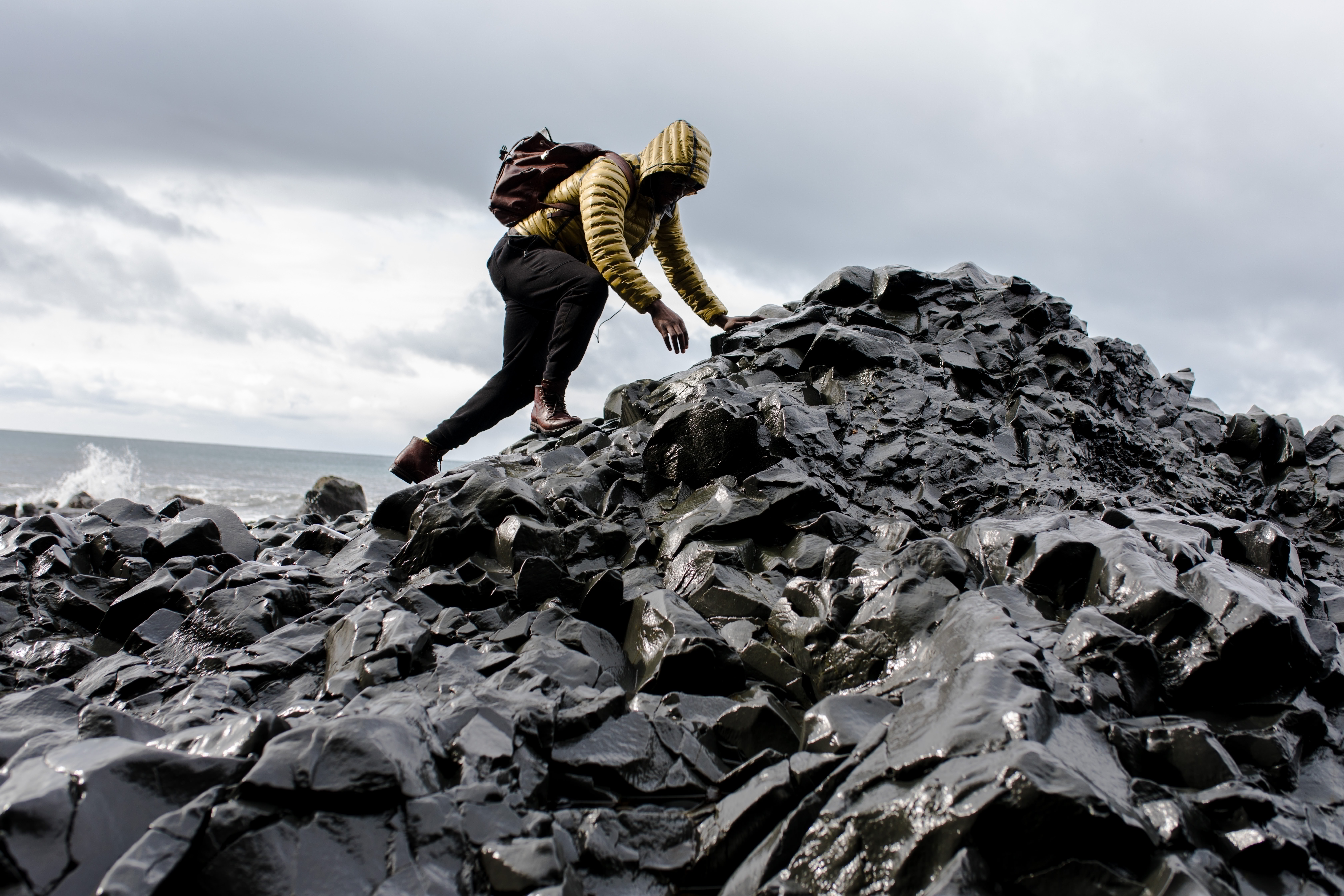Rock climbing is a sport that has been increasing in popularity for years. Many people do it for fun, while others professionally train in the sport and compete on the international stage.
The benefits of climbing are well documented, but what is it doing to your body? Can rock climbing actually build muscle? Is it a good workout, and what kinds of positive and negative effects does it have on your body?
Let's take a closer look!
What is Rock Climbing?
Rock climbing is a sport that involves ascending cliffs or other large rock formations using the hands and feet. It can be done outdoors or indoors on artificial wall formations.
Rock climbers use incredible strength, flexibility, and agility to scale dizzying heights by combining physical power with mental concentration. They study routes, figure out strategies as they go, and then employ superhuman power, flexibility, and agility to make their way to the top.
The sport can be done by anyone, regardless of size or strength, as long as there is proper instruction and equipment.
Is Rock Climbing a Good Workout?
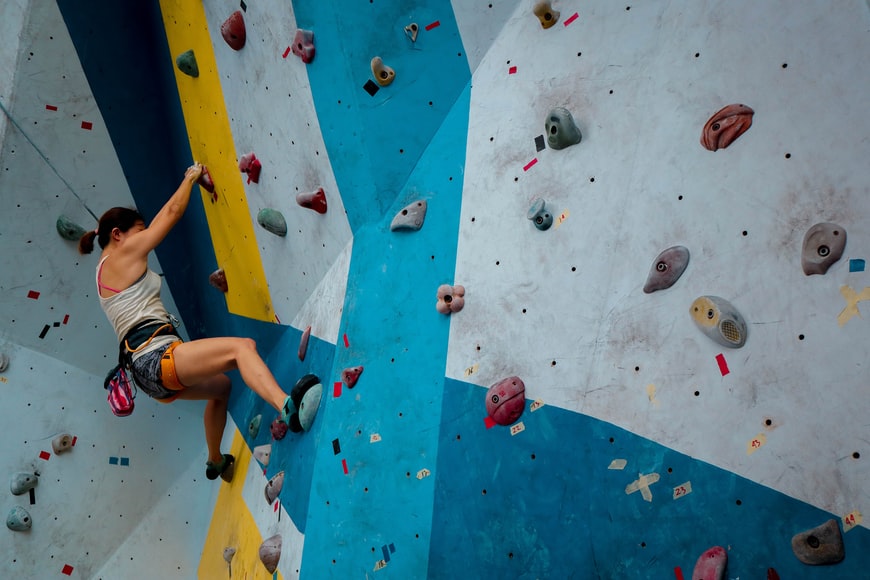
The answer is yes. As a form of exercise, rock climbing covers a wide range of bases, and many fitness enthusiasts worldwide have seen the appeal. As a result, rock climbing has replaced the gym as a more enjoyable, social, and intellectually stimulating way to exercise.
You can even choose whether you want a rigorous or a lighthearted training session.
Rock climbing uses all major muscle groups in your body and builds strength, endurance, and coordination. You can even burn up to 600 calories per hour of vigorous climbing!
Here are more ways rock climbing makes for a good workout:
Cardiovascular health
William Sheel, a professor of kinesiology at the University of British Columbia in Canada, conducted a study on the physiology of rock climbing in 2004.
The amount your heart rate will rise when you climb is determined by how hard you push yourself, according to Sheel. Whatever your level of expertise, your heart will get a workout if the climb is challenging for you [1].
"We found that climbers use a significant portion of their aerobic capacity. The heart rate response was higher than we predicted." - William Sheel
Another study also states that climbing consumes and burns calories, like everything else that elevates your heart rate.
Even if a 155-pound person is climbing several notches below "maximum effort," they will burn between eight and ten calories each minute while doing so [2].
Leg Muscles
The quadriceps, hamstrings, and calves are the primary leg muscles used in climbing. Your quads get a major workout as they extend your legs to reach for holds and pull you up. The hamstring works hard to keep you balanced, and the calf muscle helps propel you upward.
Your thighs also get a good workout from rock climbing because one of the primary sources of your power comes from your legs as you are in constant contact with the wall with both feet.
Your glute muscles also work in tandem with your legs to keep you stable and balanced. After a while, you'll notice that your legs will begin to look more toned, and you'll be able to climb for more extended periods without experiencing fatigue.
Upper Body Strength
Your shoulders, hands, wrists, back, and shoulders take most of the work during rock climbing. Just reaching your arm up overhead activates huge muscles like the latissimus dorsi, rhomboids, deltoids, biceps, trapezius, and serratus anterior.
Not to mention all of the tiny muscles in your wrists and hands that are working to keep the grip during this exercise.
It's always a good idea to do some general upper body strengthening exercises like push-ups, pull-ups and dips before you go rock climbing so your arms, shoulders, and back can support the rest of your weight as you climb.
Core Strength
Climbing generates a lot of strain on your abdominal muscles, even while you're resting. These muscles support and stabilize you every time you raise a knee when you climb.
The transversus abdominis works to keep your spine stable as you reach your arms and legs in all sorts of directions. Meanwhile, when you round your back and flex your spine like when you're doing a layback, that's when your rectus abdominis and obliques are active.
They also perform movements like side bending and spine rotation, which you'll be doing increasingly as you progress through more challenging terrain.
Can You Get Ripped from Rock Climbing?
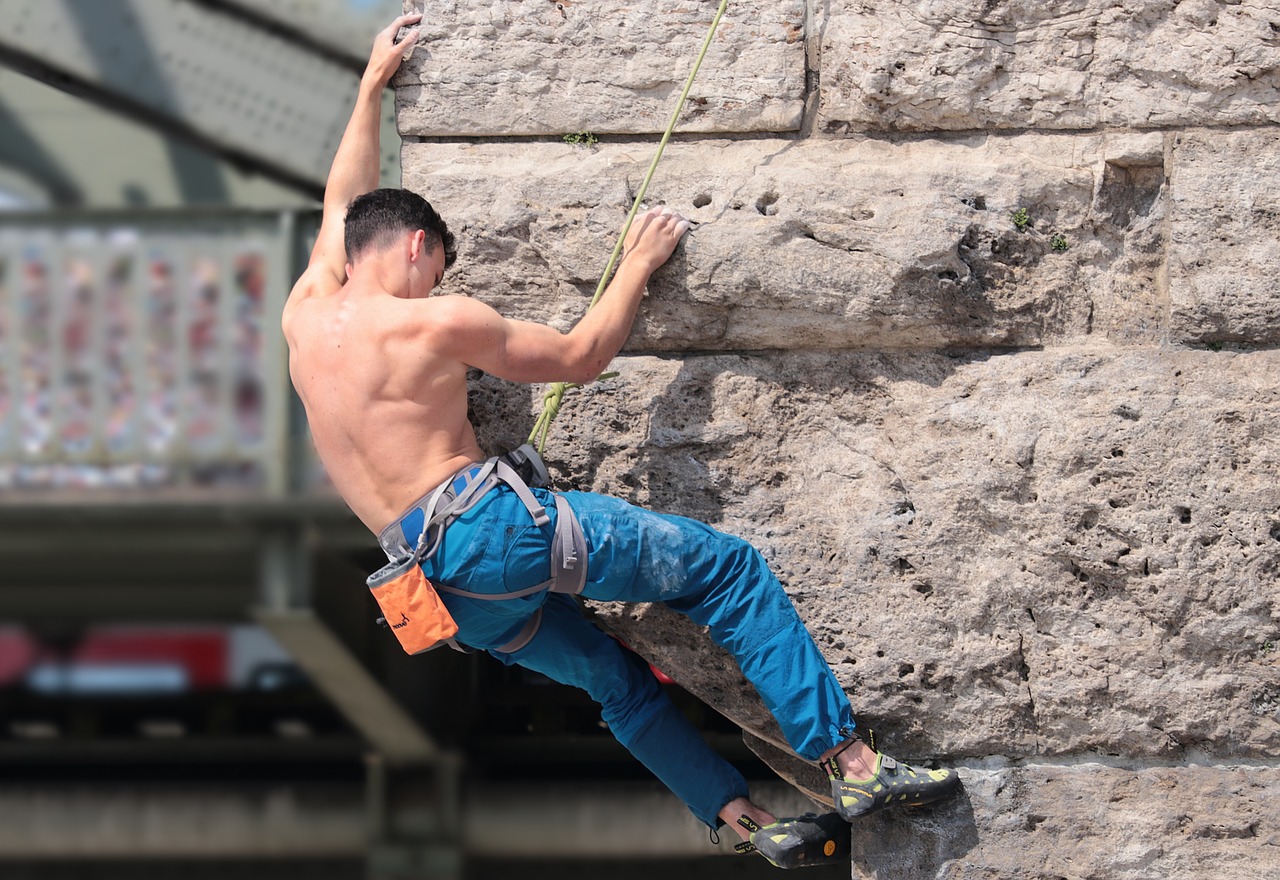
You can definitely get ripped from rock climbing if you make it a regular part of your workout routine.
For rock climbing to produce visible results in terms of physical conditioning, you need to climb regularly. Aim for at least two rock climbing sessions per week for an hour or more each time.
This consistency will help you improve your technique so that the exercise becomes even more effective, rather than if you only go once in a while and can't get into a rhythm with it.
Your muscles will get more defined, and you'll start to see a reduction in body fat.
As you continue to get better at rock climbing, your muscles will also develop symmetry and become more balanced.
Rock climbing is also great for improving joint flexibility and range of motion. So not only will you see an improvement in your physique, but you'll also be able to dominate more challenging climbs.
What Are The Mental Benefits of Rock Climbing?
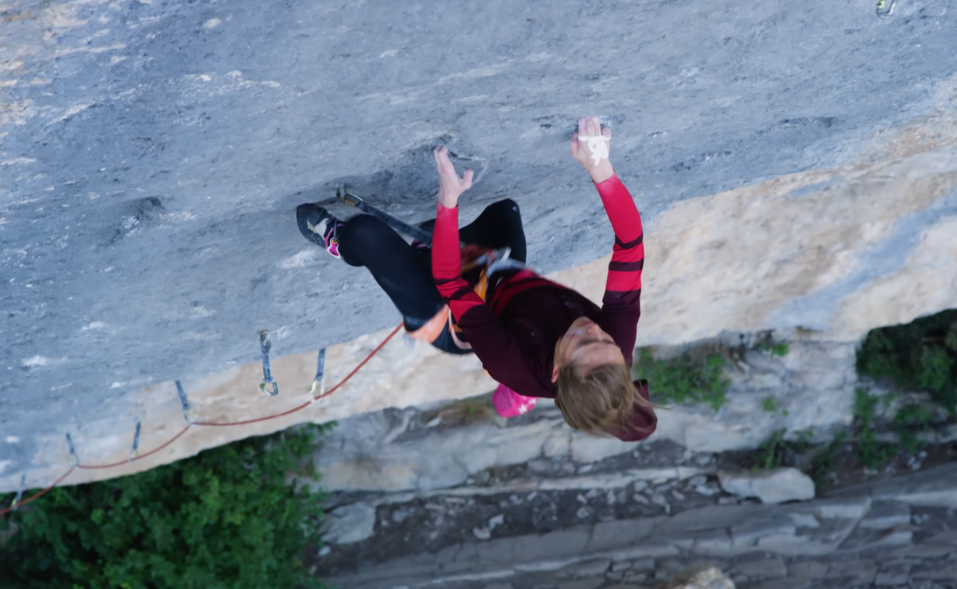
Rock climbing is just as fantastic for your physical health as many other sports since you will undoubtedly notice a definition in your muscles and an overall improvement in strength over time.
However, as essential as physical strength is to rock climbers, Sierra Blair-Coyle, a Mammut pro climber, claims that climbing also requires mental fortitude.
"No matter how strong you are, if you do not correctly approach the route/boulder with good technique, you won't be able to do the route/boulder," Blair-Coyle tells Elite Daily over email [8].
This technique, she says, "forces the body and minds of rock climbers to constantly be thinking on the wall," which inspires a sort of mind-body mentality outside the sport, as well.
Rock climbers have to be able to focus on the task at hand while also being in tune with their body and what it's telling them. Climbing requires focus and concentration, which can help them stay calm under pressure.
This kind of awareness is beneficial in all aspects of life, as it allows climbers to be more present and attentive. It's a great way to improve your physical, mental, and emotional well-being.
Are There Negative Effects of Rock Climbing?
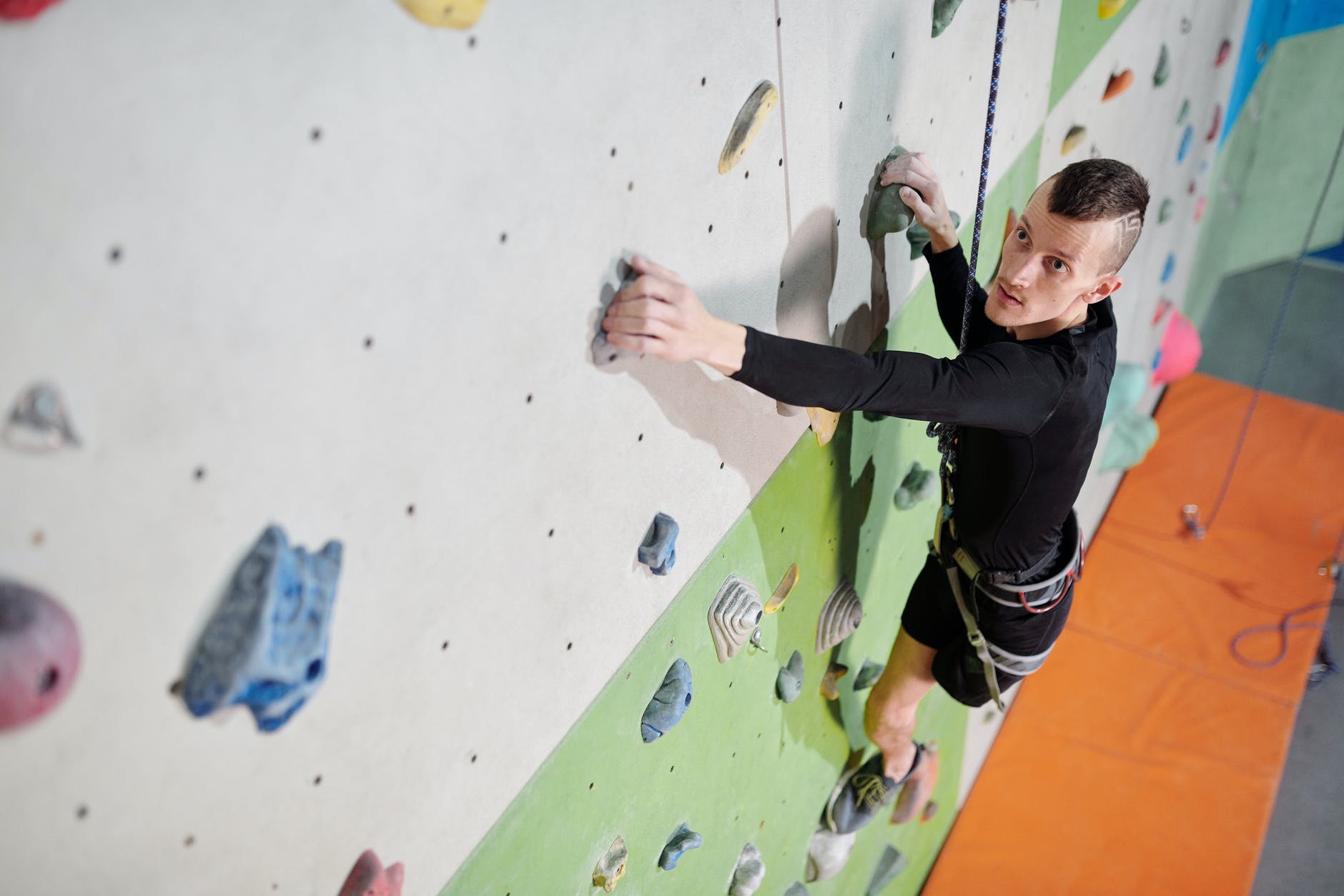
Every sport has its potential drawbacks, and rock climbing is no exception. You could hurt yourself if you're not careful or experienced.
You can strain your muscles by overexerting them, so make sure you build up your strength before attempting challenging climbs. If you try to move too fast or push yourself too hard, you may risk tearing a muscle.
It's also possible for more severe injuries to occur if you're not experienced or careful, such as falling from great heights and breaking bones.
Always learn how to climb safely before trying it out on your own. The best way to avoid getting hurt is by following the rules and regulations of your local rock climbing gym.
Wear a helmet and other safety equipment like harnesses to avoid injuring yourself if you fall or slip up on the wall.
If it's your first time, start with an easier climb to get used to the sport before moving on to something more challenging. And make sure you're warmed up before you start climbing to prevent any injuries.
Conclusion
If you're thinking of taking your workout to the next level, then give rock climbing a try. You'll see a noticeable difference in your physique, and you'll also develop mental toughness that can be translated into other areas of your life.
The great thing about rock climbing is that you can do this sport at any age. It doesn't matter if you're an experienced climber or just starting out; there are routes suitable for everyone.
You'll build up strength, endurance, and flexibility while also improving your balance and coordination skills. Plus, you'll get to meet new people and enjoy some friendly competition.
So what are you waiting for? Get out there today!

